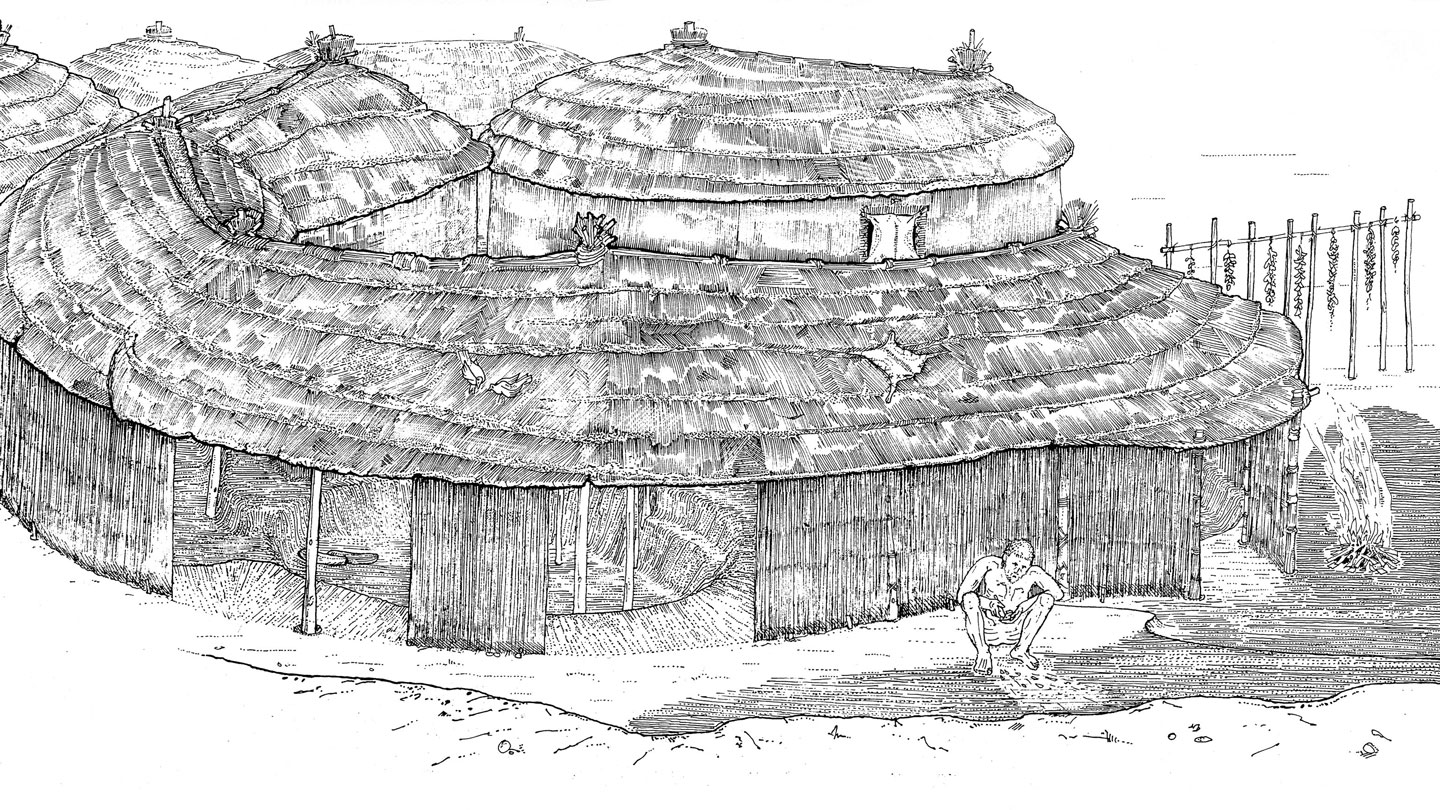- September 16, 2022
- No Comment
- 5 minutes read
Humans may have started tending animals almost 13000 years ago – Science News Magazine

Support nonprofit journalism.
Early humans at Abu Hureyra (illustrated), an ancient settlement in present-day Syria, burned dung as fuel and may have kept animals on-site nearly 13,000 years ago.
Andrew Moore (CC-BY 4.0)
By
September 14, 2022 at 2:00 pm
Hunter-gatherer groups living in southwest Asia may have started keeping and caring for animals nearly 13,000 years ago — roughly 2,000 years earlier than previously thought.
Ancient plant samples extracted from present-day Syria show hints of charred dung, indicating that people were burning animal droppings by the end of the Old Stone Age, researchers report September 14 in PLOS One. The findings suggest humans were using the dung as fuel and may have started animal tending during or even before the transition to agriculture. But what animals produced the dung and the exact nature of the animal-human relationship remain unclear.
Headlines and summaries of the latest Science News articles, delivered to your inbox
Thank you for signing up!
There was a problem signing you up.
“We know today that dung fuel is a valuable resource, but it hasn’t really been documented prior to the Neolithic,” says Alexia Smith, an archaeobotanist at the University of Connecticut in Storrs (SN: 8/5/03).
Smith and her colleagues reexamined 43 plant samples taken in the 1970s from a residential dwelling at Abu Hureyra, an archaeological site now lost under the Tabqa Dam reservoir. The samples date from roughly 13,300 to 7,800 years ago, spanning the transition from hunter-gatherer societies to farming and herding.
Throughout the samples, the researchers found varying amounts of spherulites, tiny crystals that form in the intestines of animals and are deposited in dung. There was a noticeable uptick between 12,800 and 12,300 years ago, when darkened spherulites also appeared in a fire pit — evidence they were heated to between 500⁰ and 700⁰ Celsius, and probably burned.
The team then cross-referenced these findings against previously published data from Abu Hureyra. It found that the dung burning coincided with a shift from circular to linear buildings, an indication of a more sedentary lifestyle, along with steadily rising numbers of wild sheep at the site and a decline in gazelle and other small game. Combined, the authors argue, these findings suggest humans may have started tending animals outside their homes and were burning the piles of dung at hand as a supplement to wood.
“The spherulite evidence reported here confirms that dung of some sort was used as fuel,” says Naomi Miller, an archaeobotanist at the University of Pennsylvania who was not involved with the study.
Figuring out what animal left the dung could reveal whether animals were tethered outside or not. While the authors propose wild sheep, which would have been more accommodating to capture, Miller suggests the source was probably roaming wild gazelle.
“Spherulites coming from off-site collection of gazelle dung, stored until burned as fuel, is to my mind a more plausible interpretation,” Miller says. Even if kept for a few days, she says, sheep wouldn’t produce large amounts of dung.
“The whole thing is a classic whodunit,” says anthropologist Melinda Zeder, something perhaps DNA analysis could solve (SN: 7/6/17). Gazelle might be the source, she says, and if captured young, the animals may have even been tended for a while — even if they weren’t eventually domesticated.
“The interesting thing is that people [were] experimenting with their environment,” says Zeder, of the Smithsonian Institution in Washington, D.C. “Domestication is almost incidental to that.”
Questions or comments on this article? E-mail us at [email protected]
A. Smith et al. Epipalaeolithic animal tending to Neolithic herding at Abu Hureyra, Syria (12,800–7,800 calBP): Deciphering dung spherulites. PLOS One. Published online September 14, 2022. doi: 10.1371/journal.pone.0272947.
Science News was founded in 1921 as an independent, nonprofit source of accurate information on the latest news of science, medicine and technology. Today, our mission remains the same: to empower people to evaluate the news and the world around them. It is published by the Society for Science, a nonprofit 501(c)(3) membership organization dedicated to public engagement in scientific research and education (EIN 53-0196483).
© Society for Science & the Public 2000–2022. All rights reserved.
Subscribers, enter your e-mail address for full access to the Science News archives and digital editions.
Not a subscriber?
Become one now.

